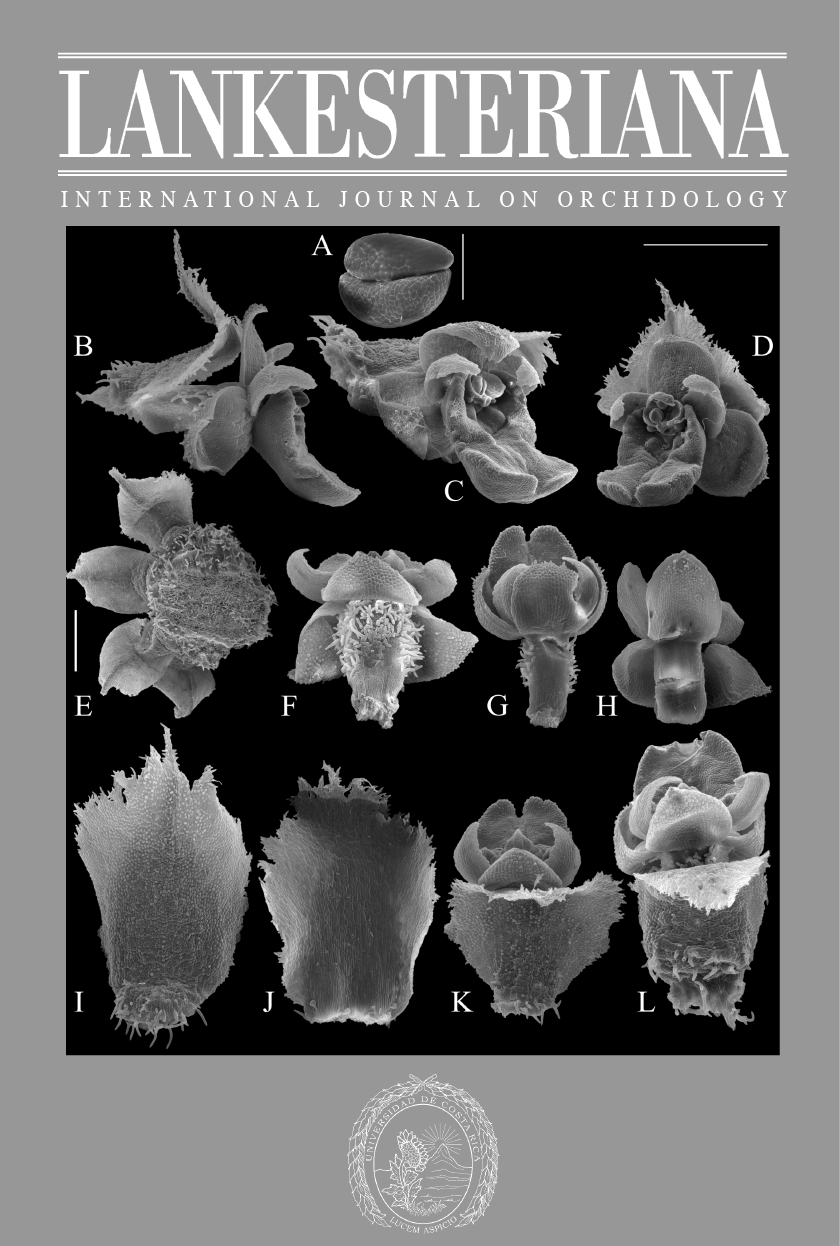Studies in <i>Oberonia</i>, 9: Lessons from excess names in <i>Oberonia</i> for Orchidaceae systematics, including a revision of the <i>Oberonia</i> Sect. <i>Scytoxiphium</i>
DOI:
https://doi.org/10.15517/lank.v21i2.47245Abstract
The reasons for excess names in microfloral orchids such as Oberonia Lindl. can be traced to poor scholarship (e.g., failure to review the literature, ignoring expert advice), typological thinking, and erroneous assumption of microendemism. Some extraordinarily poor descriptions, including some from the 21st century, can be termed “taxonomic vandalism”. The outdated reliance on drawings as opposed to z-stacked photographs and scanning electron micrographs poses further problems due to an abundance of demonstrable problems with drawings. The Oberonia sect. Scytoxiphium Schltr. with eight described species is reduced to one species, Oberonia heliophila Rchb.f.; it is illustrated by original drawings, live photographs and scanning electron microscope images. The distribution is extended from Java through Micronesia and Samoa. The species occurs predominantly from 0–500 m, less frequently to 900 m, and possibly to even 1900 m. It flowers throughout the year.
Keywords/Palabras clave: Oberonia, Oberonia sect. Scytoxiphium, revision, revisión, synonymies, sinonimias, taxonomic vandalism, vandalismo taxonómico
Downloads

Published
How to Cite
Issue
Section
License
According to the Open Access policy promoted by the University of Costa Rica, all the papers published by Lankesteriana are licensed under the Creative Commons copyright and can be downloaded free of charge. The journal holds copyright and publishing rights under the CC BY-NC-ND 3.0 CR license.
Before the publication of the materials submitted by the author(s) in LANKESTERIANA, the author(s) hereby assign all rights in the article to the Lankester Botanical Garden.




